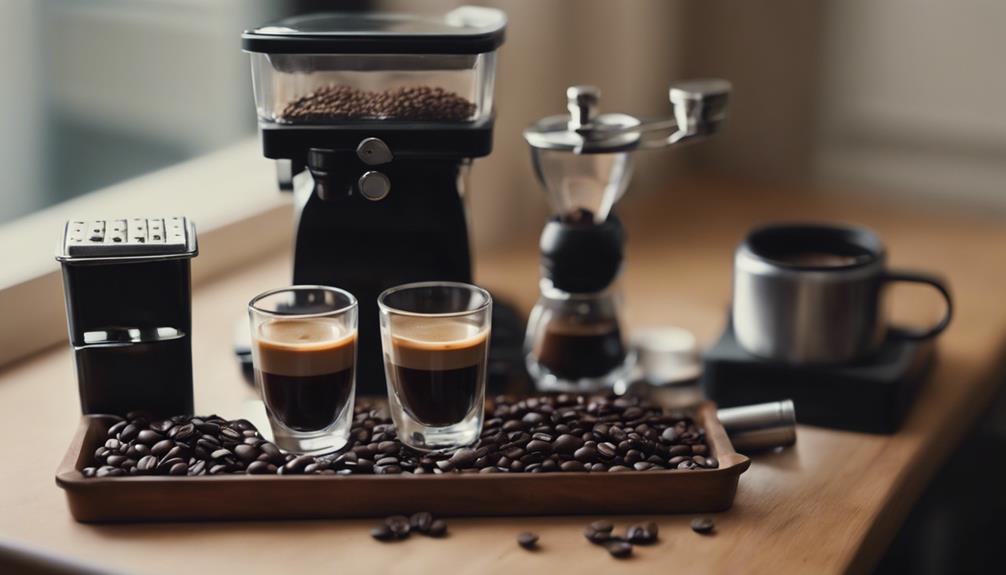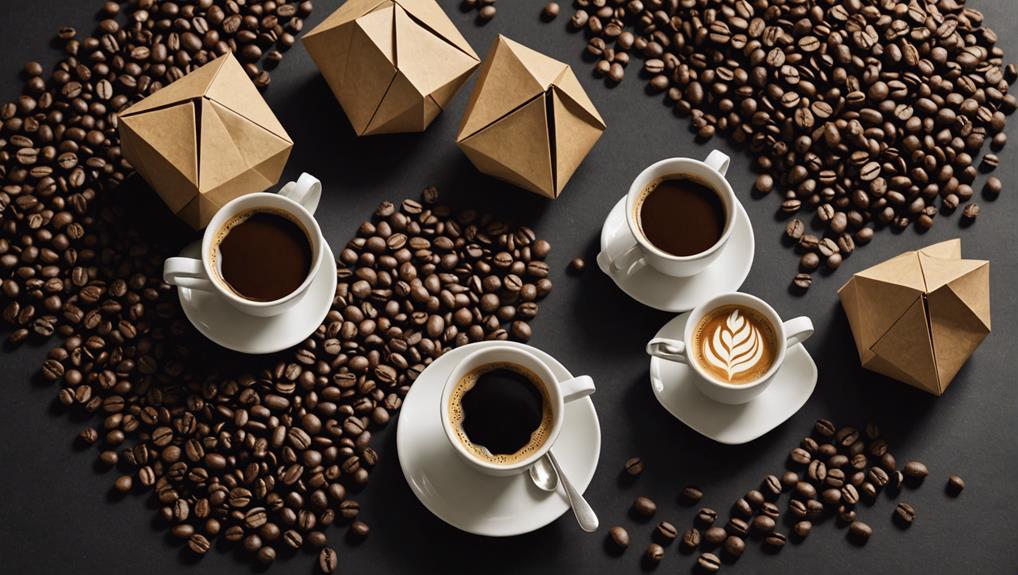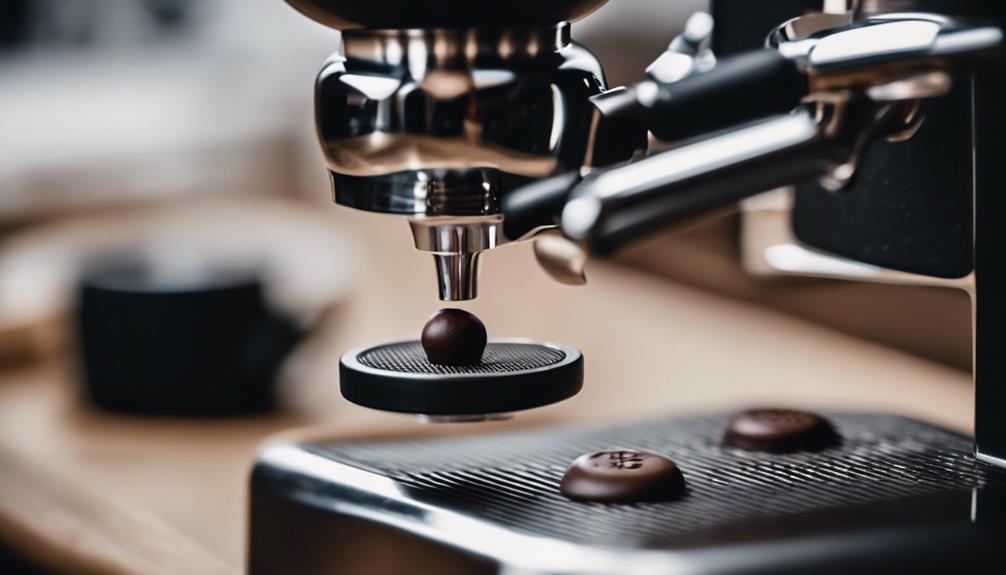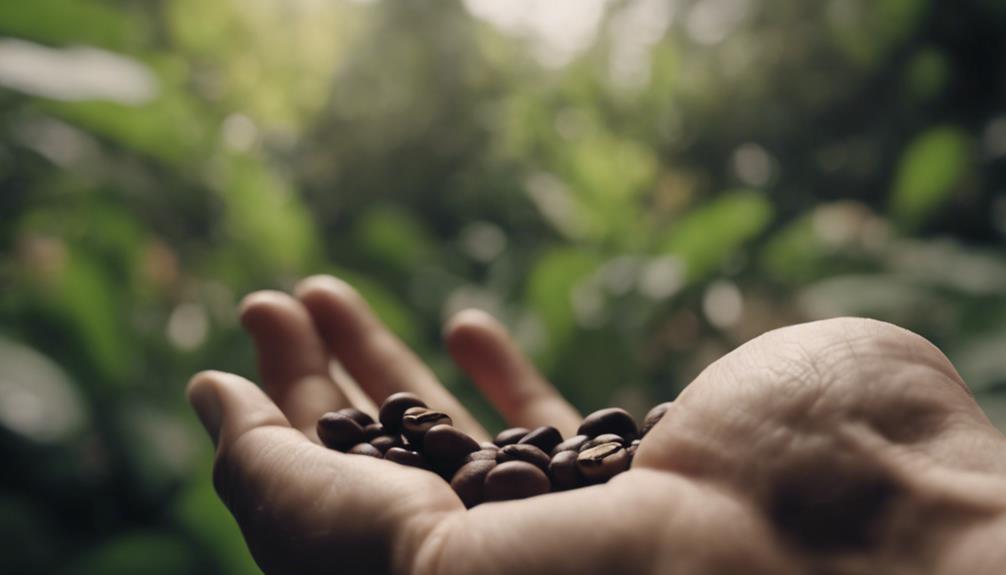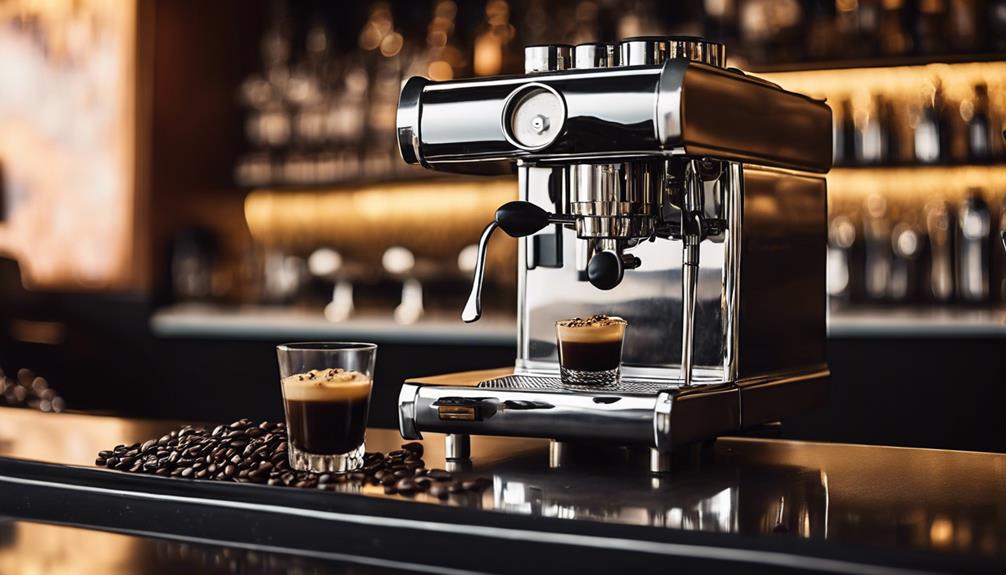To maintain the freshness of your espresso shots, consider using ice water baths or pre-cooled vessels. Stainless steel or whisky chilling cubes are also effective options. Avoid freezing the shots as it can negatively impact their flavor and texture. Opt for stainless steel storage containers to preserve taste effectively. Experiment with various cooling methods such as ice cubes, but monitor dilution levels carefully to ensure the desired taste. Pre-chilled pitchers or whisky cubes can help effectively cool the shots while maintaining consistency in flavor. For long-lasting freshness, store the shots in airtight containers and follow proper storage practices. Explore further to discover additional tips for keeping your espresso shots fresh.
Key Takeaways
- Store espresso shots in airtight containers to preserve flavor.
- Avoid mixing old and new shots to maintain consistency.
- Freezing shots can extend shelf life without taste compromise.
- Follow recommended storage guidelines for freshness and quality.
- Proper storage techniques are crucial for flavor maintenance.
Quick Cooling Methods
Experimenting with various quick cooling methods can greatly impact the flavor and taste of your espresso shots. Quick cooling methods such as using an ice water bath, pouring your espresso into pre-cooled vessels like heavy glasses or metal pitchers, or even utilizing stainless steel or whisky chilling cubes can influence how you perceive the flavor of your shot.
When you shock hot espresso into ice using the Japanese Pour-Over method, the rapid cooling process can alter the taste profile of your espresso. Additionally, cooling your espresso shots in pre-cooled vessels can expedite the cooling process and potentially enhance the overall flavor perception.
For a quick cooling solution, consider using a cobbler shaker or a lid's cap with a strainer in an ice water bath. These methods not only cool down your espresso rapidly but also contribute to the overall taste experience.
Avoiding Freezer Storage
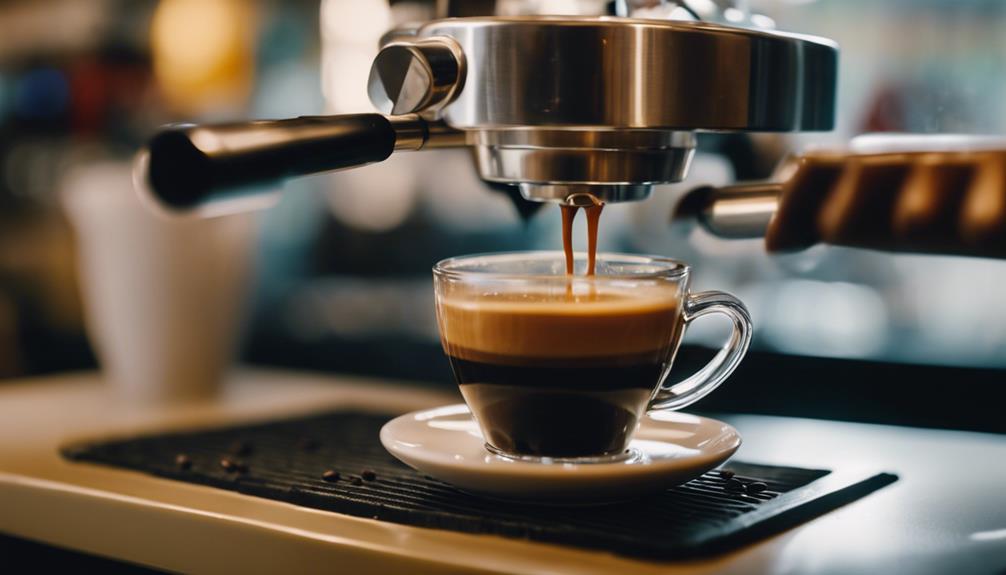
When considering storage options for your espresso shots, it's important to avoid freezer storage due to its negative impact on flavor and texture.
Freezing espresso can lead to flavor degradation and loss of the crema on top, altering the taste and quality of your shot. Ice crystals formed during freezing can disrupt the smoothness and richness of your espresso, resulting in a watery or diluted shot upon thawing.
To maintain the best taste and freshness of your espresso, it's recommended to store your coffee beans or shots in the fridge instead of the freezer. The cold temperature of the fridge helps preserve the flavor and aroma without compromising the integrity of your espresso.
Use of Stainless Steel
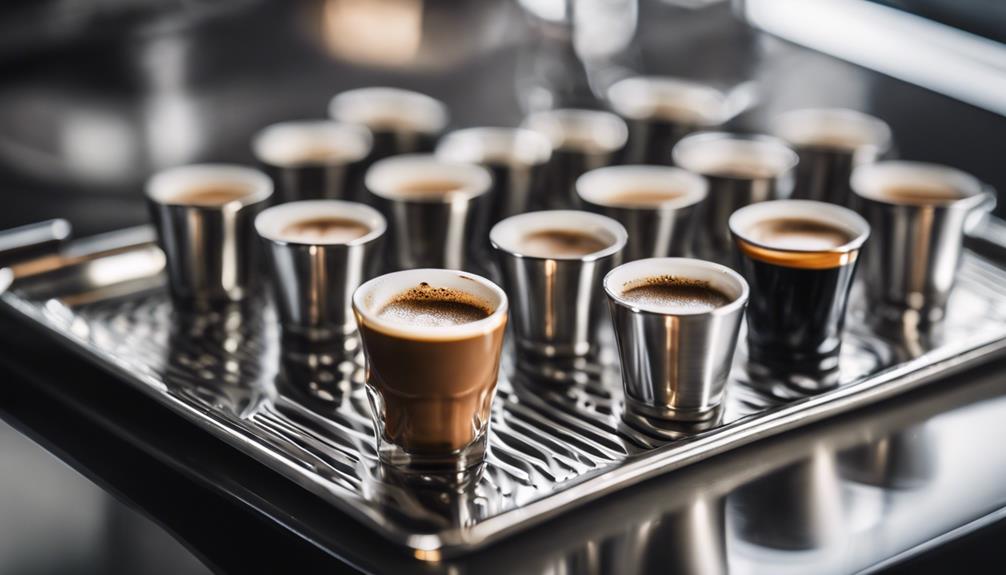
Utilizing stainless steel containers can effectively preserve the freshness and flavor of your espresso shots. Stainless steel's non-reactive properties make it an excellent choice for storing espresso, as it prevents any unwanted odors or flavors from impacting the taste of your shots. The durability and hygienic nature of stainless steel also contribute to keeping your espresso fresh for longer periods. Additionally, stainless steel containers offer airtight properties, ensuring that your espresso shots maintain their quality and taste over time.
Choosing stainless steel for storing your espresso shots not only helps in freshness preservation but also provides a sleek and modern storage solution. The contemporary look of stainless steel containers can elevate your kitchen or coffee station while serving the practical purpose of keeping your espresso shots at their best.
Consider incorporating stainless steel containers into your storage routine for a convenient and effective way to maintain the quality of your espresso shots.
Experiment With Cooling Techniques

To guarantee freshness, experiment with cooling your espresso shots using different techniques.
Try the ice cube method by placing stainless steel or whisky chilling cubes in your espresso.
This method cools your drink without diluting its flavor, offering an invigorating experience.
Chill for Freshness
Consider experimenting with various cooling techniques to preserve the freshness of your espresso shots. There are several methods you can try to chill your espresso effectively without compromising its flavor. Here are some techniques you can explore:
| Technique | Description | Effectiveness |
|---|---|---|
| Ice Water Bath | Submerge espresso shot in an ice water bath for rapid cooling. | More effective than freezer |
| Pre-Cooled Pitcher | Pour hot espresso into a pre-cooled heavy glass or metal pitcher to cool it down quickly. | Rapid cooling process |
| Stainless Steel/Whisky Cubes | Use stainless steel or whisky chilling cubes to cool espresso without diluting its flavor. | Retains original taste |
| Japanese Pour-Over Method | Shock hot espresso into ice using the Japanese Pour-Over method for a quick cooling process. | Efficient cooling technique |
Experiment with these cooling techniques to find the best method that suits your preferences and helps maintain the freshness of your espresso shots.
Ice Cube Method
Try freezing your espresso shots in ice cube trays as a practical method for long-term storage. By pouring your freshly brewed espresso into ice cube trays and freezing them, you can conveniently store individual portions for later use.
These espresso ice cubes can be kept in the freezer for up to two months without losing their flavor. When you're ready to enjoy a revitalizing espresso-based drink, simply pop out a few espresso cubes and thaw them before adding them to your beverage.
This method allows you to experiment with different cooling techniques and find the best way to preserve the quality of your espresso shots. Whether you prefer a chilled espresso straight or want to create a delicious iced coffee, the ice cube method provides a versatile way to store your espresso for future enjoyment.
Monitoring Dilution Levels
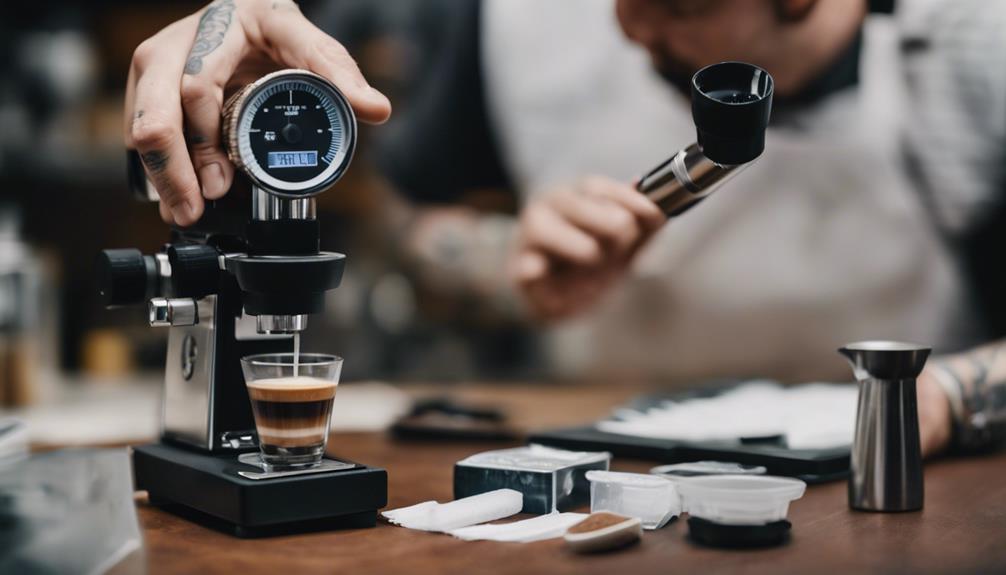
To guarantee your espresso shots maintain their intended flavor, closely monitor the dilution levels as the coffee cools.
By keeping an eye on the ratio of melted ice to espresso, you can control the dilution process effectively.
Dilution Control Methods
Maintain consistency in your espresso shots by monitoring dilution levels through the use of a controlled ratio of espresso to water.
When considering dilution control methods, keep in mind the impact of ice melt on your espresso's flavor profile. Experiment with various cooling methods to find the right balance between chilling your espresso and minimizing dilution.
You can explore alternative options such as stainless steel cubes or chilled glassware to help regulate the dilution process effectively. Taste testing different dilution control methods will allow you to discover the ideal combination that suits your taste preferences.
Testing Espresso Strength
For accurate monitoring of dilution levels in your espresso shots, utilize a refractometer to measure the TDS (Total Dissolved Solids) percentage. The TDS measurement is essential for evaluating espresso strength and ensuring a consistent flavor profile. Ideally, the TDS percentage in espresso should fall within the range of 8-12% to achieve a well-balanced taste. By using a refractometer, you can obtain precise readings of the TDS content in your espresso, allowing you to make necessary adjustments to your brewing parameters such as grind size and extraction time.
To help you understand the significance of TDS measurement in testing espresso strength, refer to the table below:
| TDS Percentage | Espresso Strength |
|---|---|
| Below 8% | Weak and under-extracted espresso |
| 8-12% | Balanced and flavorful espresso |
| Above 12% | Strong and potentially over-extracted espresso |
Taste Testing Impact
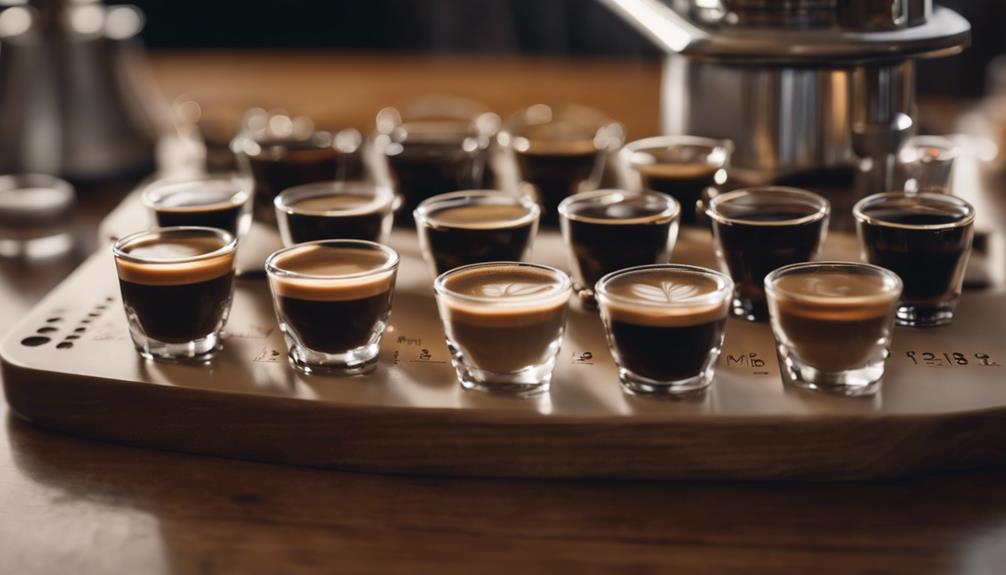
Regularly conducting taste tests with different storage methods for espresso shots can provide valuable insights into how each approach impacts flavor and quality. By comparing freshly brewed shots to stored ones in a blind taste test, you can pinpoint the storage technique that best preserves the desired flavor profile of your espresso.
Here are a few emotional triggers to ponder when evaluating the taste testing impact:
- Discovering the subtle nuances in flavor changes due to different storage methods can be a rewarding journey.
- Uncovering the best way to store your espresso shots might elevate your coffee experience to new heights.
- Mastering the art of preserving the rich flavors of your espresso through taste testing can lead to a more satisfying cup of coffee.
Experimenting with various storage techniques not only enhances your understanding of espresso but also helps maintain the freshness and quality of your shots. Conducting taste tests with stored espresso shots is a practical approach to identifying the most effective way to uphold the essence of your brew.
Pre-Cooled Pitcher Option
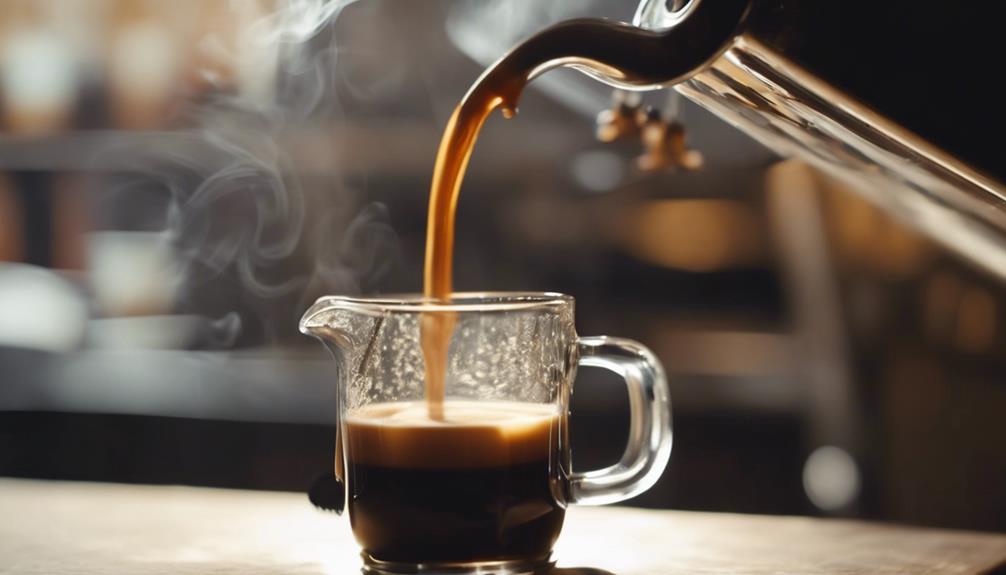
Pre-cooling a heavy glass or metal pitcher can effectively cool down freshly pulled espresso shots, preserving their flavor and quality. When you pour hot espresso into a pre-chilled pitcher, the cold surface rapidly absorbs the excess heat, bringing the temperature of the espresso down to an ideal level for savoring its rich flavor.
By using this method, home baristas can guarantee that their espresso shots are enjoyed at the perfect temperature without compromising on taste. The quick cooling process helps maintain the espresso's flavor profile, preventing it from becoming too hot and losing its nuances.
This technique is a convenient and efficient way for coffee enthusiasts to enhance their espresso experience at home. So, next time you pull a shot of espresso, consider pre-cooling a pitcher to elevate your coffee enjoyment and savor the full range of flavors each shot has to offer.
Whisky Chilling Cubes
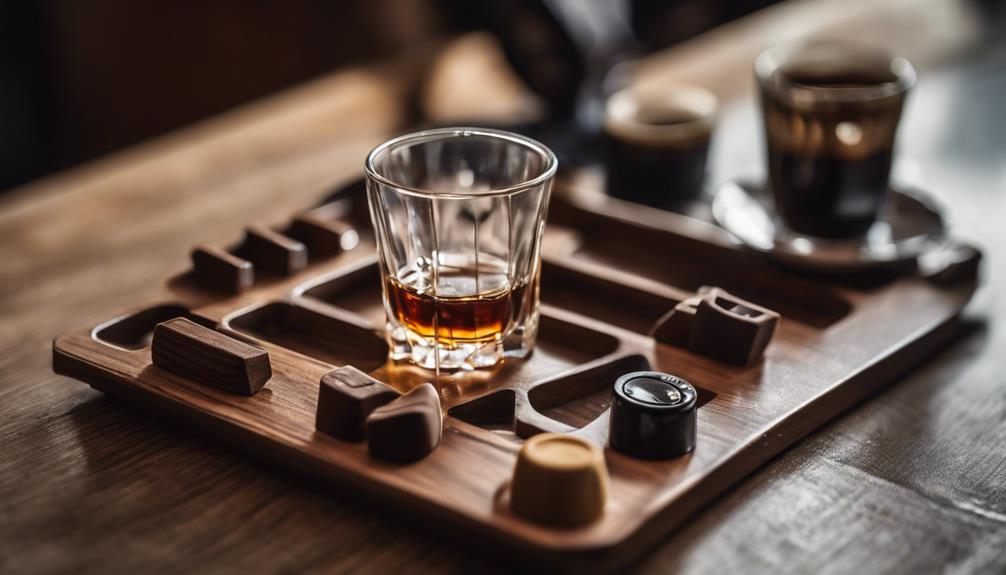
Consider using whisky chilling cubes as a non-diluting way to cool down your espresso shots while preserving their flavor and strength. These stainless steel cubes are designed to cool your espresso without watering it down, providing a quick and efficient solution for enjoying an invigorating yet robust espresso experience.
Here are some reasons why whisky chilling cubes can be a great addition to your espresso routine:
- Preserve Flavor: Whisky chilling cubes cool your espresso without altering its flavor profile, allowing you to savor the full taste of your brew.
- Maintain Strength: Unlike traditional ice cubes that dilute your espresso, whisky chilling cubes keep the strength of your shot intact for a bolder coffee experience.
- Reusable and Sustainable: By storing whisky chilling cubes in the freezer, you can use them multiple times, making them an eco-friendly and practical option for cooling your espresso.
Consistent Flavor Maintenance
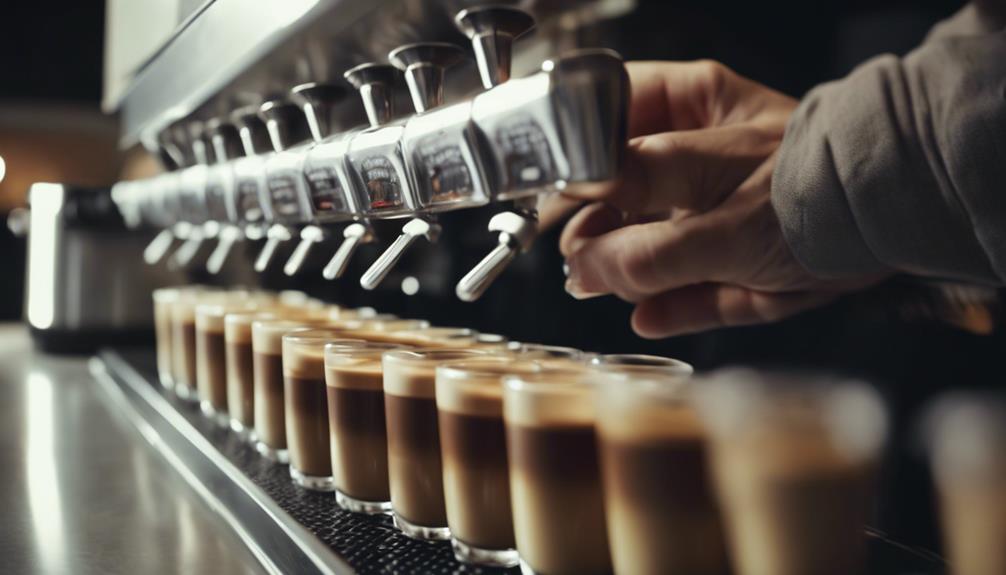
To maintain a consistent flavor profile for your espresso shots, proper storage techniques are key. Ensuring that your espresso shots are stored in airtight containers is essential to prevent flavor degradation.
Mixing old and new shots can lead to inconsistencies in espresso taste, so it's best to avoid this practice.
If you want to extend the shelf life of your espresso shots without sacrificing their good tasting qualities, consider freezing them.
By following recommended storage guidelines, you can preserve the freshness and quality of your espresso shots over time.
Remember, the way you store your espresso shots directly impacts their flavor integrity, so take the necessary steps to maintain that delicious taste for as long as possible.
Consistency in storage practices will help you enjoy a consistently great cup of espresso every time.
Frequently Asked Questions
How Long Can You Keep an Espresso Shot?
You can keep an espresso shot in the fridge for 4-7 days before it loses freshness. It's important to avoid mixing old and new shots to maintain quality and prevent bacterial growth.
For a longer storage solution, freezing espresso shots in ice cube trays works well. Each cube can be used for a single serving, keeping the taste and freshness intact.
Properly stored frozen espresso shots can last a long time without compromising quality.
How Do You Keep Espresso Shots From Dying?
To keep espresso shots from losing their potency, store them in airtight containers to shield them from air exposure.
Avoid combining old and new shots to maintain freshness and prevent spoilage.
Enhance their longevity by freezing in ice cube trays, preserving flavor and convenience.
How Do You Keep Espresso Fresh After Brewing?
To keep espresso fresh after brewing, store it in an airtight container in the fridge for up to a day. Stale espresso loses flavor and crema, turning bitter or sour.
Ground espresso lasts 3-4 weeks in the fridge, but brewed espresso only a day. The acidity and caffeine in espresso speed up spoilage if not stored properly.
Avoid reheating brewed espresso to maintain its taste and quality.
Does Espresso Go Bad When It Sits?
Espresso can lose its freshness and flavor quickly if left sitting too long. Stale espresso can taste bitter, sour, and lose its crema and aroma.
The acidity and caffeine content in espresso can speed up spoilage. To prevent this, store your brewed espresso in an airtight container for up to 4-5 days.
Avoid letting espresso sit out for extended periods to maintain its quality.
What is the Best Way to Store Espresso Shots to Ensure Freshness?
The best way to store espresso shots to ensure freshness depends on how long espressos last. It’s recommended to keep them in an airtight container at room temperature for up to 2 hours, or in the refrigerator for up to 12 hours. After that, they lose their optimal flavor.
Conclusion
In a world full of espresso shots, finding the perfect storage method can be a challenging task. By utilizing quick cooling methods, avoiding freezer storage, and experimenting with different techniques, you can guarantee your shots maintain their delicious flavor.
Remember, like a well-oiled machine, proper storage is key to keeping your espresso tasting its best.
So go ahead, explore the world of storage options and elevate your coffee experience to new heights.
